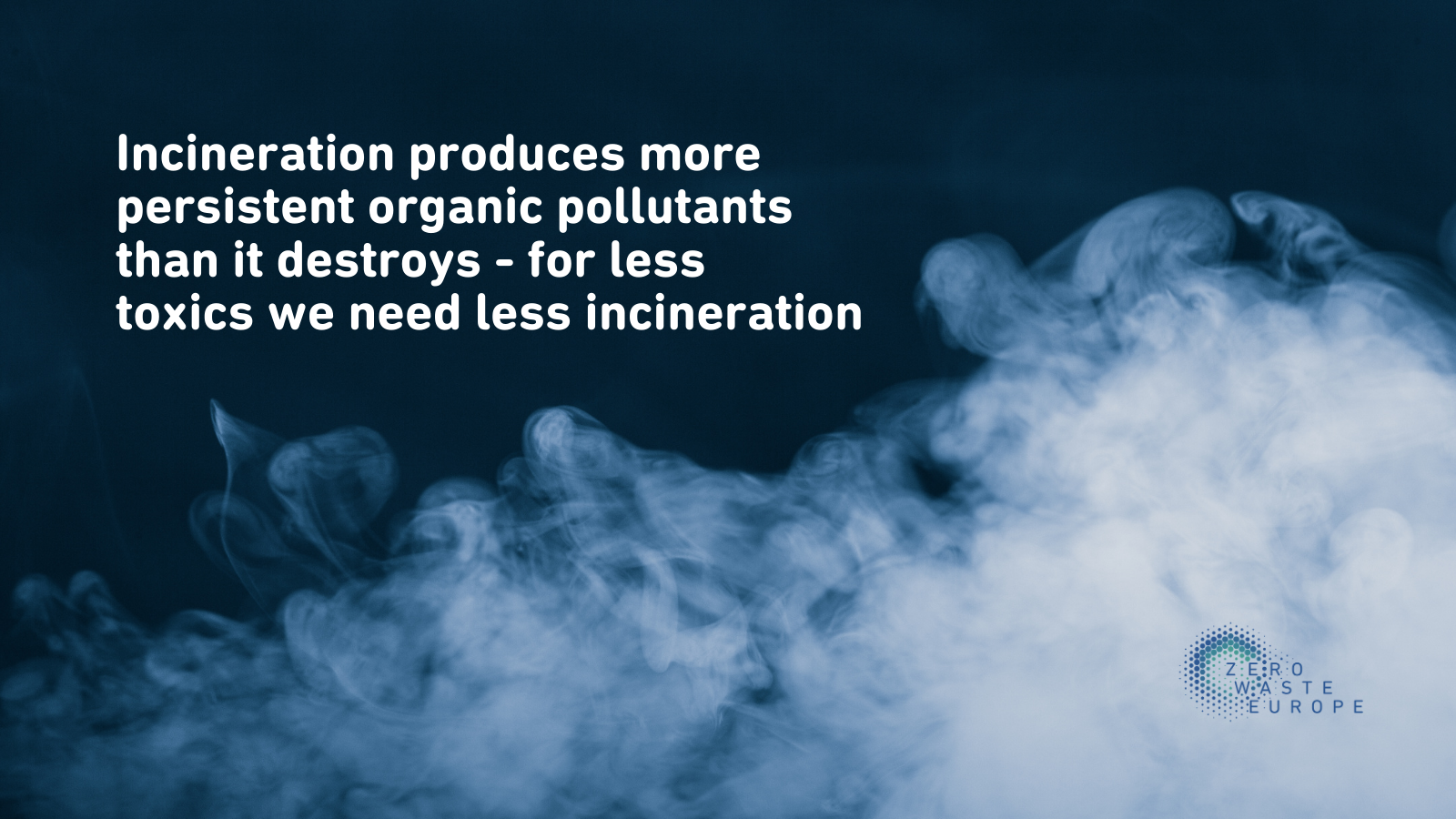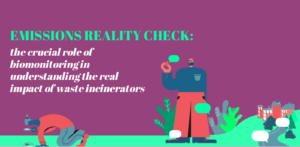Incineration produces more persistent organic pollutants than it destroys – for less toxics we need less incineration

Waste incineration generates large quantities of dioxins in its residues, and in fly ashes in particular. According to Pollutants Elimination Network (IPEN), between 7 – 10 kg TEQ (toxic equivalency) dioxins are generated per year in waste incineration fly ash. This figure might not appear to be that shocking at first look, but in reality, it is equal to the tolerable intake (0.25 pg TEQ per kg of body weight) of the entire population of 25 planet Earths.
The EU limits for dioxin content in waste, are very poor, and suggest that incineration residues could be used in different so-called “useful applications”. For example, fly ash from waste incinerators is used in a wide range of materials for building roads or embankments. It is also used as a cover layer for remediation purposes in some countries. However, research shows that the uncontrolled use of incineration residuals has resulted in contamination of food chains.
European Food Safety Authority (EFSA) stated already in 2018 that dietary exposure to dioxins and dioxin-like PCBs is a public health concern, and that data from European countries indicated an excess of EFSA’s new tolerable intake level across all age groups.
Persistent Organic Pollutants (POPs) have been banned for good reason by the Stockholm Convention. Which is why it is entirely wrong that they can remain built into the circular economy where they continue to pose a threat to both human health and the environment.
The general approach suggested by the Stockholm Convention, specifically in its “Guidelines on Best Available Techniques and Provisional Guidance on Best Environmental Practices” recommends to avoid building new potential sources of POPs such as dioxins: “In general, priority should be given to approaches that prevent the formation and release of chemicals listed in Annex C of the Convention. ….. When considering proposals to construct new waste disposal facilities, consideration should be given to alternatives such as activities to minimise the generation of municipal and medical waste, including resource recovery, reuse, recycling, waste separation and promoting products that generate less waste. Under this approach, public health concerns should be carefully considered.”
The European Union, as Party to the Stockholm Convention, should therefore respect this requirement and lower dioxin content levels to protect human health and the environment.
We have therefore asked the European Commission to lower POPs content limits in our feedback to POPs in waste consultation as follows:
- 1 ppb (= 1 ng/g WHO-TEQ) for PCDD/Fs + dl-PCBs with additional limit of 50 pg WHO-TEQ/g (0.05 ppb) of these substances for untreated waste used on land surface
- 100 ppm (= 100 mg/kg) for HBCDD
- 50 ppm (= 50 mg/kg) for sum of PBDEs (including Deca-BDE)
- 100 ppm (= 100 mg/kg) for SCCPs • 10 ppm (= 10 mg/kg) for sum of PFOA/PFHxS and related substances
In order to meet these obligations, we also call for legislation to allow other innovative non-combustion technologies to be used for the destruction of POPs waste so as not to form new POPs as a result of waste incineration.


